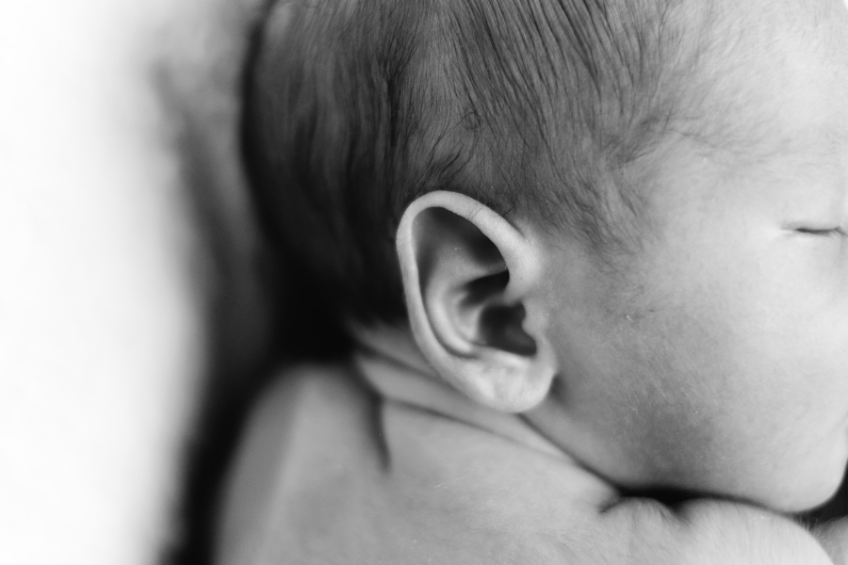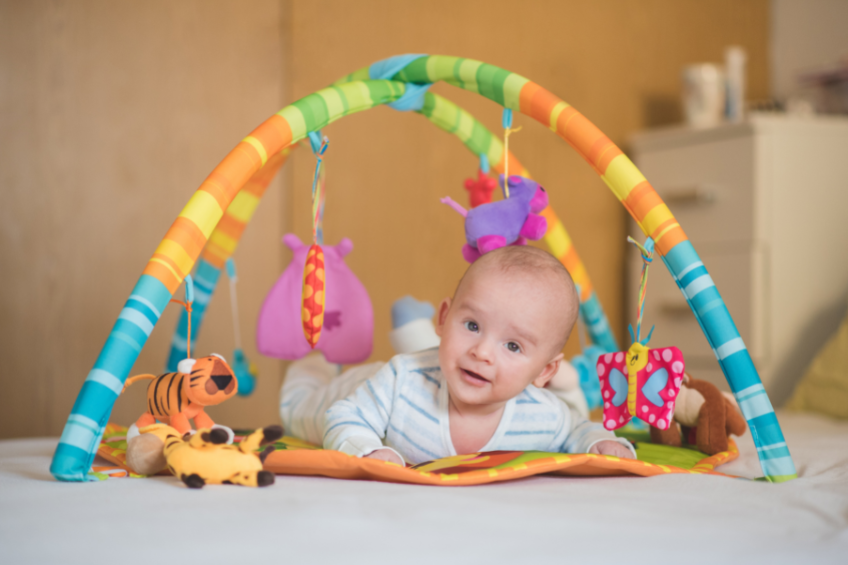How To Help a Baby With Torticollis?
/
Just the other day, Sandra sent some adorable baby pictures of her newborn baby, Adam that were taken at Picture People in the mall in Woodbridge, NJ. She was expecting a slew of emoji responses after she posted the pictures to her WhatsApp status and that is about it. Later that evening her Aunt Becky called to tell Sandra how cute her baby is and expressed concern how it seemed that Adam was tilting his head towards one side. Becky was a retired physical therapist and let Sandra know that her newborn might be preferring to lean his neck to one side due a condition referred to as torticollis. Since Sandra knew that it was coming from an expert she made an appointment at her child’s pediatrician to discuss treatment options for congenital torticollis. Adam was seen twice a week by a physical therapist along with at home exercises and his neck straightened out just a little after four months.

Congenital muscular torticollis or better known as CMT is a condition that causes a newborn to tilt their head to one side or consistently prefer to use one side over the other. It almost appears that the baby is stubbornly stuck in that position with no real injury visible except maybe a rash or slight redness (a rash is not from this condition but comes from the lack of exposure to that area of the skin). The baby does not feel any pain at all and can eat, sleep, and play all while being in this uncomfortable looking position. But in most cases the parent is the one that is bothered most and a treatment plan is put in place to help these dogged neck muscles.
Similar to when an adult has a stiff neck and they can’t seem to maneuver it straight, a baby has quite the same problem when diagnosed with torticollis. The only difference is that an adult knows what to do to get his or her head on straight but a newborn does not. Each side of a baby’s neck has a set of sternocleidomastoid muscles that control the maneuverability of the cervical spine area. When the condition of CMT is present one of the sternocleidomastoid muscles is shorter on one side which limits the flexibility of the neck. The baby can’t simply retrain itself like an adult because they never used these muscles before in their life. This is why a pediatrician or physical therapist needs to be seen to help rework these muscles to provide the baby with dual maneuverability on both sides of the neck.
How Parents Can Help Their Newborn With Torticollis
Before we document how to help your baby CMT condition it’s vital that you have your newborn seen by your local pediatrician to determine the severity of the condition. It is never a good idea to self diagnose anyone from literature across the internet and that is why we recommend always to be seen by a local physician first. Doctors can see the full picture and even might just recommend some at home exercises if your baby’s torticollis condition is not so severe.
Physical Therapy: PT is the primary remedy for treating torticollis and is commonly recommended by pediatricians. In most cases parents will be recommended to a physical therapist by their doctor and an evaluation will take place to determine how long the therapy will be and how many sessions a week it will take to get there. The hardest part of any physical therapy is the fact that both mom and baby’s schedule will be altered going forward. No one wants to be schlepping their kid in the middle of the day from one place to the other, especially if they have a day job. That is why it would be good to have other family members on board to see if they can possibly take the baby to therapy once or maybe twice a week. The therapy is not forever so though it may be difficult to work PT into your weekly schedule just know it’s only temporary.

Once your baby is at physical therapy the therapist will stick to a set of exercises that focus on the baby to use their neck muscles where CMT is present. At first that baby may cry as their weakened sternocleidomastoid muscles are strengthened but with every exercise it gets a little easier. Always be sure that you’re ok with the PT and that the exercises are being done in the most gentle way possible. Also don’t be surprised if the therapist sends you home with homework for your newborn to do exercises like Tummy Time when possible. Our busy schedules might get in the way but keep in mind that if you follow up therapy sessions with exercises at home your baby’s treatment time will likely be shortened and that is good for everyone.
Home Exercises: As mentioned above, home exercises are essential for treating any type of torticollis condition. Even more so when your pediatrician sends you home without recommending PT. No one wants to see their baby struggling but it is important for mom and dad to work the weak side of the neck to straighten the appearance of how the baby holds its head. Over the course of time you will begin to notice that it becomes slightly easier for your baby to be on their stomach. With every head bob the sternocleidomastoid muscle of the weak side gets stretched which is what we are seeking to accomplish. Other exercises like waving your baby’s favorite toy on the side where the stretching is needed also are important to relieve neck stiffness. If you have older kids in the family or your baby is by grandma’s house try and get them involved in torticollis exercises. Every stretch helps in getting your baby’s neck appearance back to normal.
Besides the playful activities there are more neck engaging exercises where you place the baby on their back and slowly bring their head to the opposite side (where CMT is not present) while holding their shoulder in place. Not to say that these exercises are not recommended, it is just that you need to know what you’re doing and you should consult your pediatrician before doing them. You always want to be gentle with your newborn and not subject them to potential injury. Keep in mind that in cases of a slight show of torticollis where the pediatrician sends you home it will eventually go away on its own because as the baby gets older they will be forced to use the weak side of the neck. The point is to never do an exercise that you and your baby are not comfortable with.
Pediatric Torticollis Surgery: After all therapy options and your child is already entering their preschool years, surgery may be required to fix what is now referred to as “acquired torticollis”. When a torticollis is present in a newborn it is as a result from stress to the neck area prior to birth or during delivery. Once the baby is born, they will habitually prefer one side over the other resulting in CMT. Over the course of time the baby should grow out of the torticollis condition but if it still remains present as the child gets older surgery may be required to fix the problem with the sternocleidomastoid muscle.
Though CMT is not dangerous it could have a devastating impact on a child’s social life as a fully normal child (not in any pain at all) gets left out of activities due to the odd appearance of their neck leaning to one side. At this point parents have to make a tough decision if they should treat the acquired torticollis with an invasive approach that finally results in a remedy for the condition. All non-invasive treatment options should be exhausted prior to opting in for pediatric torticollis surgery.
Final Words
Torticollis is quite a common condition in newborns and can be treated through an array of exercises that help strengthen the weak sternocleidomastoid muscle. No, your baby is not in pain but in most cases it causes stress to the parents and family as they see their adorable newborn with a slight tilt or preference to one side. What will help your baby are neck exercises that get those muscles working and over the course of time the condition will begin to improve. If possible try and avoid long term positions such as in a car seat, stroller, and baby rocker.

The objective is to get your baby to move which might be a little inconvenient for mom and dad’s busy life. Well that is just too bad, because the baby needs you to help them get through this condition and you are their primary caregiver. Once all is straightened out we can guarantee that the baby won’t thank you for it because they most likely will never know about it. Even if that is the case, we do it anyway because we love our kids and we only want the very best for them.

Cranial Therapy Centers is the only early interventions cranial center in the United States which provides both helmet and manual therapy treatment. We are American Board for Certification in Orthotics, Prosthetics and Pedorthics Facility. Visit us in Lakewood NJ, at 1352 River Ave Unit 14, Lakewood NJ, 08701 or in Teaneck NJ at 1086 Teaneck Road Suite 3F, Teaneck, NJ 07666. You can also email us info@cranialtherapycenters.com
